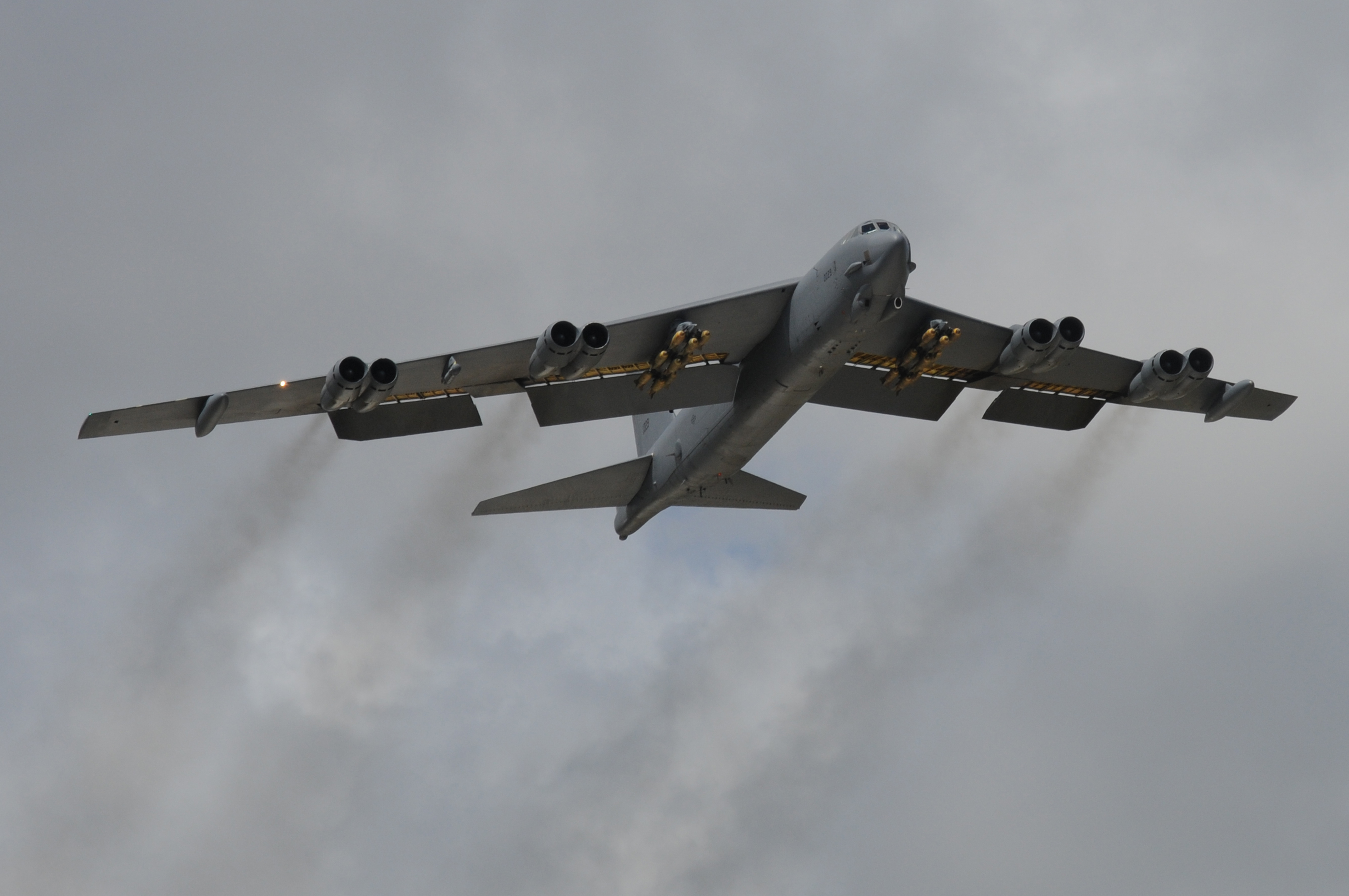
Air Force leaders and members of industry met at Barksdale AFB, La., last week to discuss re-engining the service's fleet of B-52H bombers. Air Force photo by SrA. Carlin Leslie.
The Air Force reports that it has “initial seed funding” in the 2018 budget to begin re-engining the B-52, after numerous false starts at such an effort over the last 40 years. The project is aimed at making the venerable bomber more fuel efficient, maintainable at a far lower cost, quicker to get to cruising altitude, and able to fly longer or farther.
An industry day was held last week at Barksdale AFB, La. to discuss replacing the B-52’s eight TF33-PW-103 engines with eight new engines providing better thrust, fuel burn, availability of parts, and longer on-wing time between engine overhauls. Representatives from 15 companies attended the event.
According to industry day briefing slides posted on a federal acquisition website, the fact that the Air Force is seeking information on prospective new engines is no guarantee or commitment that it will actually undertake the project.
Representatives from Tinker AFB, Okla., Wright-Patterson AFB, Ohio, and Barksdale, were also present at the industry day. The companies were allowed to examine the aircraft and the engines to get a sense of how much work would be involved in the project. The briefing slides included a notional 17-year plan to gradually reconfigure the aircraft, and it’s expected that the program would ultimately pay for itself through fuel, parts, and manpower efficiencies.
The TF33s are “costly and manpower intensive to maintain,” and parts are becoming difficult to get, according to the Air Force slides. The “bottom line” is that the current engine is “not sustainable past 2030,” but the Air Force expects the B-52 to remain operational through at least 2050.
The service wants to re-engine all 76 B-52Hs with engines offering between 20- and 40-percent greater fuel efficiency, along with better power generation capability for electronic functions. The new engines would have to interface with existing flight systems, and require little modifications to the airframe and its systems.
The proposed requirements call for nuclear-hardened engines and electronics in a package of about the same weight of the TF33s, along with a quick start capability, and new/modified cockpit throttle controls. The Air Force doesn’t want to redesign or replace the existing wing structure, but anticipates a need for new struts, nacelles, strut attachment fittings, and wing spar stiffeners. However, any modifications must not reduce the structural life of the bomber, according to the document.
Industry attendees were told the government plans a “two-step source selection” before choosing a single engine vendor. The first step would be to “identify qualified engine vendors and require them to work with the aircraft integration contractor to develop their integration approach,” according to the presentation.
USAF is considering awarding a firm, fixed-price contract for the first step and asked industry to suggest an “appropriate cost.” During this phase, engine vendors would document technical risks associated with aircraft modifications and the approximate cost for integrating the proposed engine on the B-52. Engine vendors would finalize their proposals in the second step.
The service is considering using 20 engines for developmental testing with follow-on contract options for production engines. The Air Force cautioned attendees not to start work unless a request for proposals is issued.
Speaking at AFA’s Air, Space & Cyber Conference in September, service Secretary Heather Wilson said the Air Force was trying to balance the long-term need to re-engine the B-52 with current budgetary constraints, but noted USAF would likely have to make a decision soon. At the same conference, Air Force Global Strike Command boss Gen. Robin Rand said he’s long been a proponent of re-engining, but the bigger question is “where do we find the money, because it will compete against a lot of other areas.”
The Air Force is expected to issue a new “Bomber Vector” in tandem with the 2019 budget proposal. The document will lay out the expected inception and retirement dates, respectively, for the new B-21 bomber as well as the B-1, B-2, and B-52. A draft of the Vector obtained by Air Force Magazine confirmed that the service expects to retain the B-52 in service through 2050.
The Air Force estimates it will cost about $22 billion for upgrades to keep the bomber credible and relevant for another 32 years, but it believes “this figure is offset by $10 billion cost savings from re-engining, which pays for itself in fuel, depot and maintenance costs, and maintenance manpower in the 2040s.”